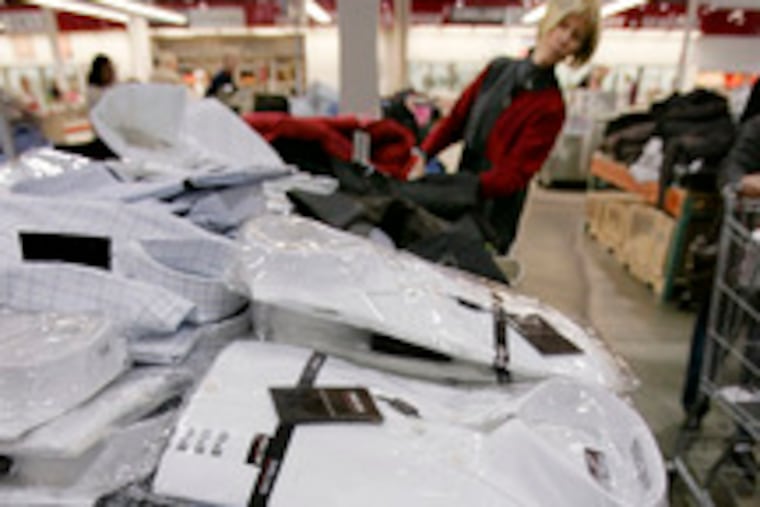Retail sales, consumer prices both rise
The data indicated less need for larger interest-rate cuts. “I think the Fed has … worries on inflation,” one economist said.

WASHINGTON - Retail sales exceeded forecasts in November, but wholesale prices jumped the most in 34 years, the government said yesterday.
Together, the two reports diminish the need for the Federal Reserve to make deeper interest-rate cuts.
In the price report, the Labor Department said a record jump in the cost of gasoline pushed wholesale prices up at the fastest pace since August 1973.
The 3.2 percent wholesale-price increase from October to November was more than double analysts' expectations of a 1.5 percent gain.
It reflected increases of 34.8 percent in gasoline prices and 31.5 percent in the cost of home-heating oil.
But even outside of energy and food, so-called core inflation rose 0.4 percent, double what had been expected.
"I think the Fed has some worries on inflation," said David Wyss, chief economist at Standard & Poor's Corp., of New York. "We are starting to see some leakage from energy into other areas of the economy."
In the more upbeat economic news, the Commerce Department said retail sales increased a better-than-expected 1.2 percent last month from October. It was the biggest sales advance in six months and came from strength in such areas as department stores, clothing shops and furniture stores. However, the report also reflected a big gain in sales at gasoline stations, a result of the higher pump prices.
Economists said the retail-sales gain should ease concerns that the economy was about to tumble into a recession, although they said overall economic growth in the current quarter was still likely to be weak given the headwinds battering consumers. Those troubles include the slump in housing, a severe credit crunch, and the surging energy costs.
The big jump in wholesale prices was worrisome, economists said, because it was not limited to energy. That suggests that the relentless surge in energy prices could be creating more widespread inflation, something that would raise alarm bells at the Federal Reserve.
The Fed tries to balance promoting economic growth and keeping inflation tame. Its desire not to stoke price increases led the Fed to limit its cut in interest rates Tuesday to one-quarter of a percentage point instead of the half-point cut Wall Street sought.
"The retail-sales report helps ease some of the worries about a recession, but it doesn't make them go away altogether," Wyss said. He said he still believed that the maximum danger point for a downturn would occur in the first three months of next year.
Half the November rise in retail sales came from a jump in gasoline prices, so that was not seen as a sign of strength in consumer demand.
But there were widespread gains across a number of other areas, including department stores and stores selling clothing, appliances, furniture and building supplies. Auto sales, however, fell for a second month, dropping 1 percent as domestic manufacturers continued to struggle with weak demand.
The 3.2 percent jump in wholesale prices followed a much more moderate 0.1 percent rise in October. The Producer Price Index measures inflation pressures before they reach the consumer. The government will release its look at consumer prices today.
Good and Bad
Retail sales in November were strong - but so was inflation.
Retail Sales
% change
Categoryfrom October
Gasoline stations+6.8
Clothing stores+2.6
Electronics/
appliance stores+2.5
Furniture stores+1.0
Grocery stores+1.0
Vehicle/parts dealers-1.0
Wholesale Prices
% change
Categoryfrom October
Gasoline+34.8
Home-heating oil+31.5
Fresh fruit+6.8
Cooking oils+4.8
Beef/veal-5.0
Residential gas-5.2
Fresh vegetables-13.2
SOURCES: Commerce Department, Labor Department
EndText